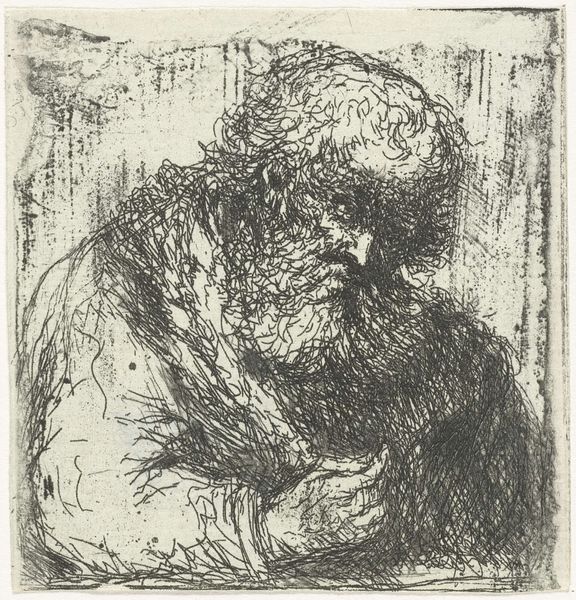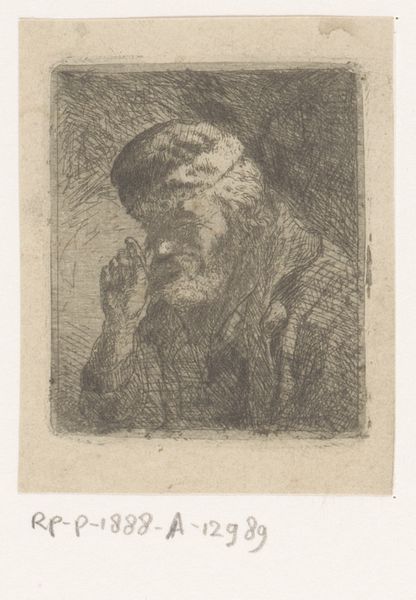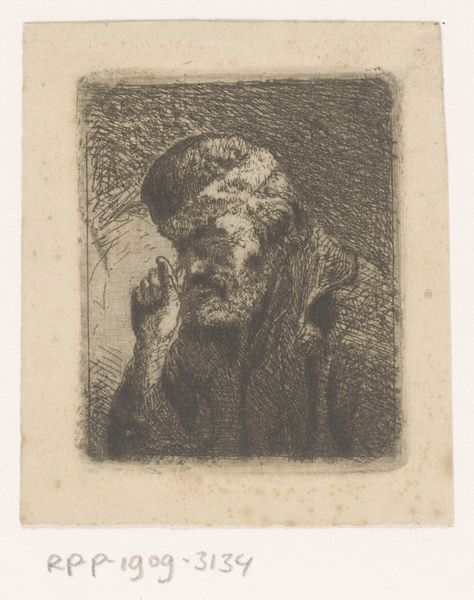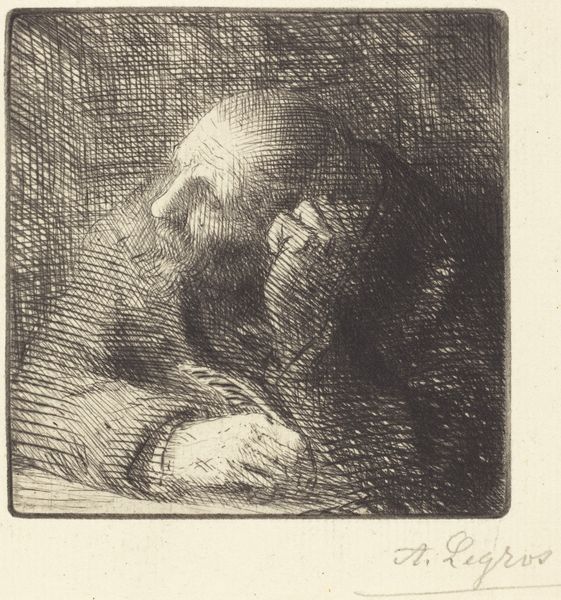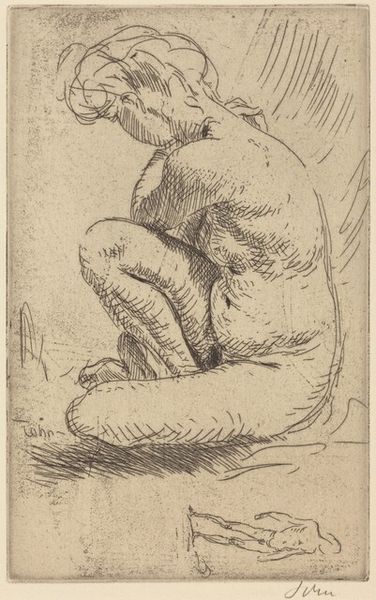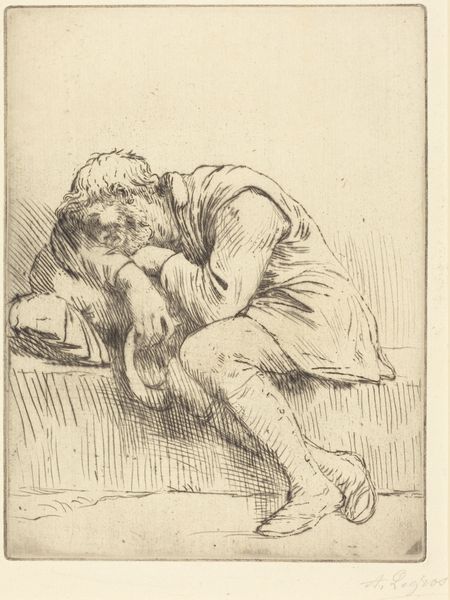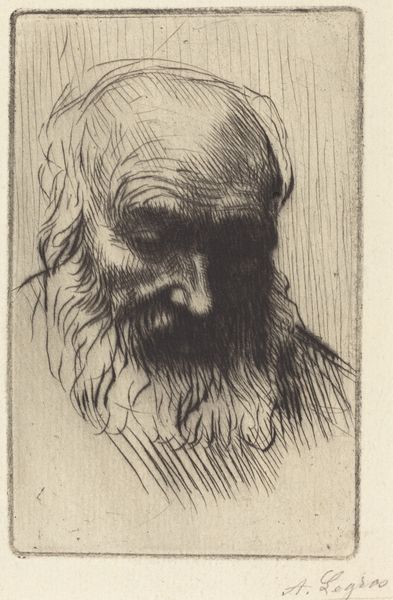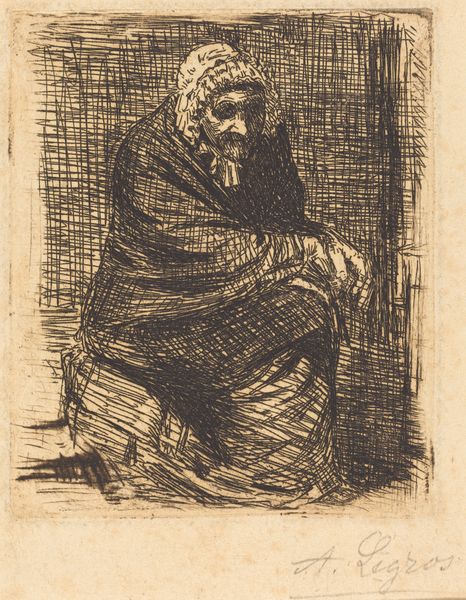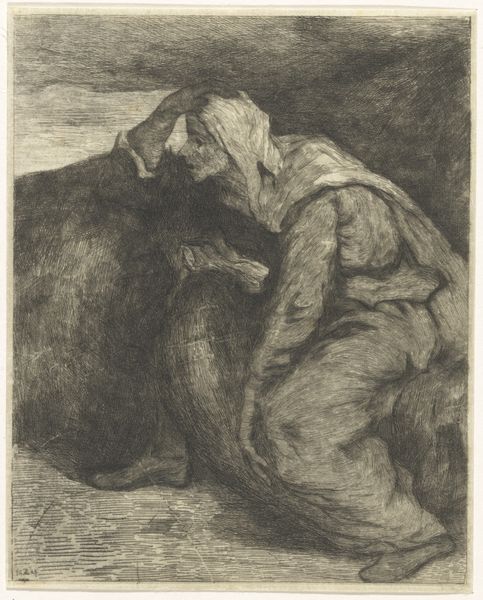
drawing, ink
#
portrait
#
drawing
#
toned paper
#
light pencil work
#
ink drawing
#
pen sketch
#
pencil sketch
#
mannerism
#
personal sketchbook
#
ink
#
ink drawing experimentation
#
pen-ink sketch
#
sketchbook drawing
#
pencil work
#
genre-painting
Dimensions: height 57 mm, width 51 mm
Copyright: Rijks Museum: Open Domain
Editor: Here we have "Slapend jong aapje", or "Sleeping Young Monkey," an ink drawing created sometime between 1567 and 1617 by an anonymous artist, currently residing here at the Rijksmuseum. The first thing that strikes me is the tenderness in the creature's posture – almost human. What do you make of this unassuming little drawing? Curator: You know, "unassuming" is a good word. It’s a quiet moment captured, isn't it? A simple pen-ink sketch on toned paper… something one might find tucked away in an artist’s personal sketchbook. But there's a palpable intimacy. The way the artist renders the monkey’s fur with those light pencil strokes...it's almost as if we're seeing a private meditation on vulnerability. Does the diagonal hatching behind the monkey conjure a sort of cage, or perhaps only a visual way to establish the mood? Editor: Cage… that’s a fascinating idea. I hadn't considered the element of captivity. I was more focused on the vulnerability in its resting state, especially in the details of its hunched posture. Do you think there's an element of social commentary here? Curator: Hmmm… commentary...Possibly. It’s difficult to know the artist’s intention. Drawings of animals during this period in the late Renaissance/early Baroque, specifically monkeys, could act as stand-ins for human characteristics—folly, imitation, the base instincts. That contrast between the human-like pose and the animal subject makes it much more affecting, don't you think? Editor: Definitely. Thinking about it now, that pose could express world-weariness that is a very human state of mind. Curator: Yes! Maybe what we’re responding to is this beautiful paradox—a distillation of something both animal and deeply, undeniably human. Editor: Thanks, I think you've really opened my eyes to how something seemingly simple can hold such complex ideas.
Comments
No comments
Be the first to comment and join the conversation on the ultimate creative platform.

